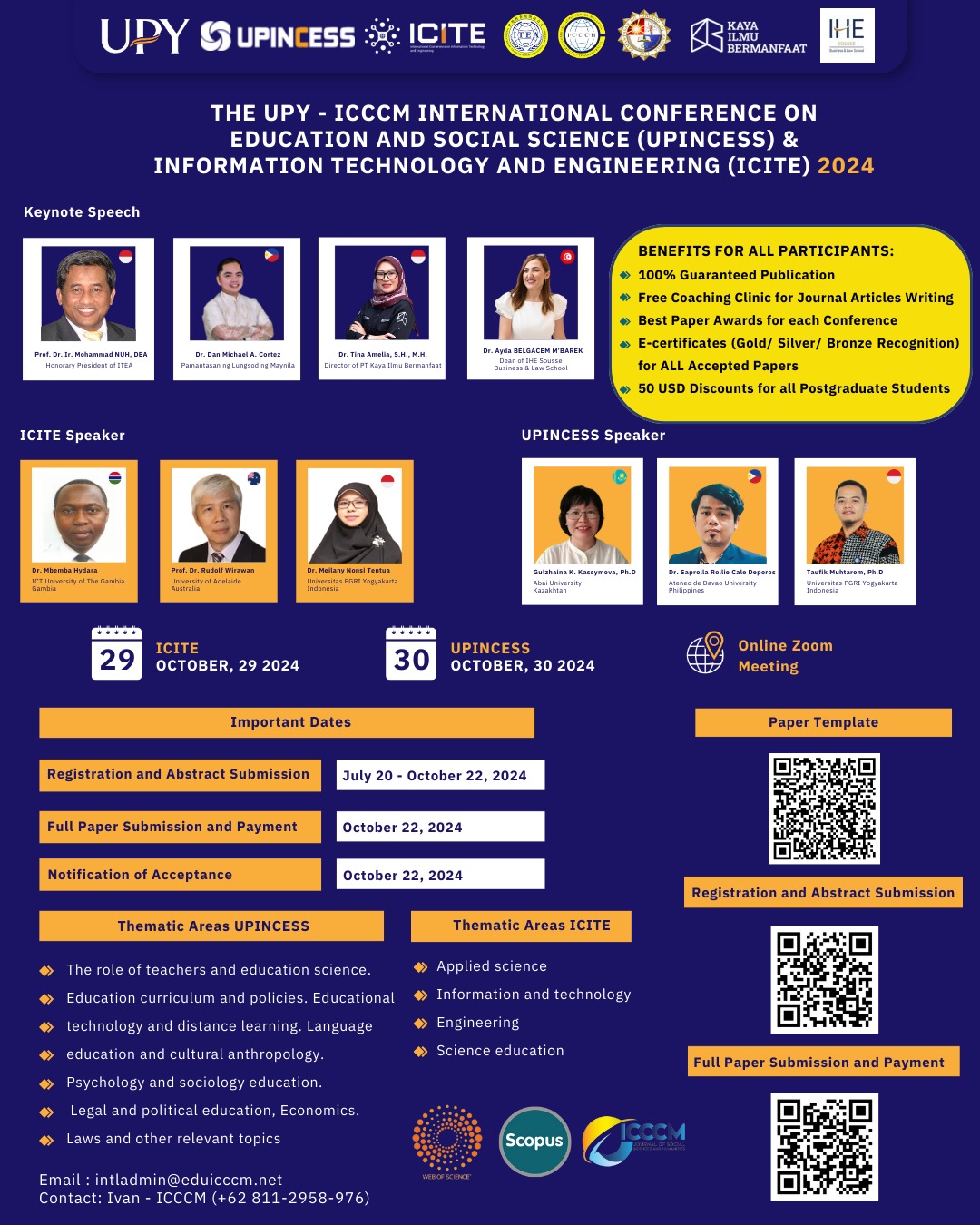Development of Loose Part-Based Smart Wheel Media in Recognizing Concept of Numbers and Symbols in Early Childhood Numeracy
DOI:
https://doi.org/10.53797/icccmjssh.v3i5.6.2024Keywords:
Smart wheel, loose parts, number conceptAbstract
The purpose of this study is to 1) Analyze the needs of the loose part-based smart wheel media development model in recognizing the concept of numbers and symbols of early childhood numbers, 2) Formulate a loose part-based intelligent wheel media development model design in recognizing the concept of numbers and symbols of early childhood numbers, 3) Analyze the feasibility of the loose part-based smart wheel media development model in recognizing the concept of numbers and symbols of early childhood numbers, 4) Analyze the effectiveness of the loose part-based smart wheel media development model in recognizing the concept of numbers and symbols of early childhood numbers. This research method uses the R&D method. The data collection techniques used by researchers are 1) Interviews with educators, students and kindergarten principals; 2) Observation; 3) Questionnaire; 4) Validation 5) Documentation. Data sources in this study are teachers, children, kindergarten principals and design and material experts. The results of the t test for wide-scale field trials are t count of 21.189, while t table is 4.388 then or 21.189 > 4.381. Ho was rejected and Ha was accepted, meaning that there was a significant change in the recognition of the concept of numbers and symbols of numbers in early childhood. While the N-Gain value is 0.71 in the high category and the % N-Gain value is 71 in the effective category. This means that the use of smart wheel game media is effectively used to introduce the concept of numbers and symbols of numbers in early childhood.
Downloads
References
Alawiyah, T. (2023). Upaya Meningkatkan Kemampuan Konsep Matematika Awal Pada Anak Usia 4-5 Tahun Menggunakan Media Papan Flannel. JUPE: Jurnal Pendidikan Mandala, 8(2), 493-498. http://dx.doi.org/10.58258/jupe.v8i2.5455
Ali, S. R. B. (2017). Analysis of numerical understanding analysis for primary school. International Journal of Academic Research in Business and Social Sciences, 7(10), 713-728. https://doi.org/10.6007/IJARBSS/v7-i10/3427
Asbari, M., Nurhayati, W., & Purwanto, A. (2019). Pengaruh Parenting style dan Personality Genetic Terhadap Pengembangan Karakter Anak di Paud Islamic School. JURNAL AUDI: Jurnal Ilmiah Kajian Ilmu Anak dan Media Informasi PAUD, 4(2), 148-163. https://doi.org/10.33061/jai.v4i2.3344
Clements, D. H., & Sarama, J. (2020). Learning and teaching early math: The learning trajectories approach. Routledge. https://doi.org/10.4324/9781003083528
Febrizalti, T., & Saridewi, S. (2020). Stimulasi Kemampuan Berhitung Anak Usia Dini melalui Metode Jarimatika. Jurnal Pendidikan Tambusai, 4(3), 1840-1848. https://doi.org/10.31004/jptam.v4i3.656
Khadijah, M. A., & Amelia, N. (2020). Perkembangan fisik motorik anak usia dini: teori dan praktik. Prenada media.
Malapata, E., & Wijayanigsih, L. (2019). Meningkatkan kemampuan berhitung anak usia 4-5 tahun melalui media lumbung hitung. Jurnal Obsesi: Jurnal Pendidikan Anak Usia Dini, 3(1), 283-293. https://doi.org/10.31004/obsesi.v3i1.183
Naja, A. R. (2018, April). Analysis of students’ creative thinking level in problem solving based on national council of teachers of mathematics. In Journal of Physics: Conference Series (Vol. 1008, No. 1, p. 012065). IOP Publishing. https://doi.org/10.1088/1742-6596/1008/1/012065
Pratiwi, W. (2017). Konsep bermain pada anak usia dini. TADBIR: Jurnal Manajemen Pendidikan Islam, 5(2), 106-117.
Roliana, E. (2018). Urgensi pengenalan konsep bilangan pada anak usia dini. In Prosiding Seminar dan Diskusi Pendidikan Dasar. (pp. 417-420).
Sood, S., & Mackey, M. (2015). Examining the effects of number sense instruction on mathematics competence of kindergarten students. International Journal of Humanities Social Sciences and Education (IJHSSE), 2(2), 2349.
Sumirat, S. F. P., Sudihartinih, E., & Sumiaty, E. (2023). Kajian Learning Obstacle pada Topik Bilangan Berpangkat Ditinjau dari Literasi PISA 2021. Jurnal Cendekia: Jurnal Pendidikan Matematika, 7(1), 350-361. https://doi.org/10.31004/cendekia.v7i1.1933
Tarr, J. E., Walker, E. N., Hollebrands, K. F., Chval, K. B., Berry III, R. Q., Rasmussen, C. L., ... & King, K. (2013). New Assessments for New Standards: The Potential Transformation of Mathematics Education and Its Research Implications: NCTM Research Committee. Journal for Research in Mathematics Education, 44(2), 340-352. https://doi.org/10.5951/jresematheduc.44.2.0340
Utami, C. P., & Eliza, D. (2022). Pengaruh Loose Parts Play Terhadap Pengenalan Konsep Angka Anak Usia 5-6 Tahun Di TK Mutiara Ceria Pasaman Barat. JECED: Journal of Early Childhood Education and Development, 4(2), 183-191. https://doi.org/10.15642/jeced.v4i2.2244
Wardhani, D. K. (2017). Peran guru dalam menerapkan pembelajaran matematika yang menyenangkan bagi anak usia dini. Jurnal Paud Agapedia, 1(2), 153-159.
Downloads
Published
How to Cite
Issue
Section
License
Copyright (c) 2024 Suryani Umaroh, Fitri Budi , Mochamad Widjanarko

This work is licensed under a Creative Commons Attribution-NonCommercial-ShareAlike 4.0 International License.




